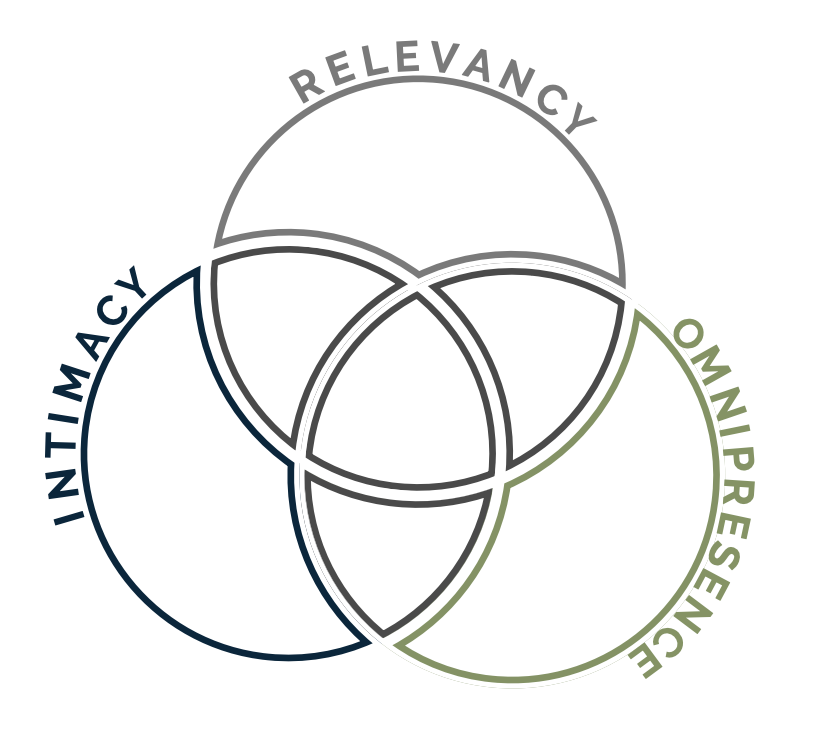Did you know there are certain cognitive biases in marketing that YOU can exploit to become the go-to agent in your market?
Here at The Listings Lab, we’re huge proponents of omnipresent marketing.
Establishing Omnipresence is actual a core part of The Listings Lab Method (detailed here in our free guide!) to help agents scale from six to seven figures.
Omnipresence is where you seem to be everywhere to your target audience.
This is what happens when you appear in someone’s life consistently. It’s the key to really dominating the newsfeeds and screens of your audience and therefore, making your prospects feel like you’re everywhere.
Are you curious to dig into the science that makes omnipresence so incredibly powerful?
In this post, we’ll dive into buyer psychology and learn about the nine cognitive biases so you can supercharge your omnipresence marketing strategy.
Let’s go.
1. The Red Car Effect
The red car effect is when we’re trained to see something, something is top of mind, or something is important to us, we begin to see it everywhere.
That thing now sits at the forefront of your mind, and you’re more aware of it.
You begin to see it everywhere, and you’re more aware that you’re seeing it everywhere.
In reality, you’re probably not seeing it more often than before, it’s just that now your brain has picked up on it.
On any given day, your brain is constantly filtering things out that aren’t relevant.
The name of this cognitive bias comes from the phenomenon where you’re thinking about buying a red car…and all of sudden, you start to see red cars everywhere.
The same thing goes for your ideal clients.
If they have a problem in their lives, they’re going to start seeing potential solutions everywhere.
When you use omnipresent marketing, you can make sure you’re putting the right content in front of them at the right time.
2. The Bandwagon Effect
The next cognitive bias is the bandwagon effect.
The bandwagon effect speaks to our desire to do something just because everyone else is doing it.
When you harness the power of the bandwagon effect, your ideal clients will be eager to work with you, because they believe all of their peers are. They don’t want to miss out.
You start to be seen as the trendy person to work with online!
It’s simple to use this effect in your omnipresent marketing. All you need to do is talk about your clients.
Share stories, case studies, and testimonials. Re-share your clients’ stories where they mention your services. Show your prospects the incredible results your clients are getting, and they’ll want to be part of the in-club, too.
3. Attentional Bias
Attentional bias states that what we pay attention to moves forward.
I talk about this from a mindset perspective all the time.
The next time you go on a walk, pay attention. Whatever you choose to look at, whether that’s a tree, or a statue, you will automatically start to move towards those things.
That’s why, when we’re taught to drive, we’re always taught to keep our eyes on the road. If you focus on something too closely that’s off to the side, you might find yourself veering off the road and ending up in an accident.
The attentional bias works really well when we’re talking about omnipresence. What ends up happening is that you’re gaining more and more attention, and therefore someone is actually feeling an internal pull towards you.
4. Barnum Effect
The next cognitive bias is the Barnum effect, and that’s the tendency to accept certain information as true, such as personality tests or horoscopes.
The Barnum effect states that people want to be pegged a certain way.
Even if you’re inaccurately describing someone, even if your marketing isn’t exactly bang-on, they’ll still think that you’re the one for them if you’ve positioned yourself correctly.
Of course, no one wants their messaging to be slightly off. You want it to be 100% magnetizing to your ideal clients.
But if you’re taking advantage of omnipresent marketing and constantly getting in front of your ideal clients, they will see themselves in your content.
If you’ve got four out of five things right about your ideal clients, they won’t notice that they’re not quite resonating with that fifth point. They’ll feel your marketing was meant for them anyway, thanks to the Barnum effect.
5. Mere Exposure Effect
The fifth cognitive bias, the mere exposure effect, is the one that I probably talk about the most and relates the most heavily to omnipresent marketing.
The mere exposure effect states that the more familiar you are with something, the closer you feel to it.
When you see something or someone over and over again, you build trust with them.
This is a horrible example, but Stockholm Syndrome operates on this principle.
Over time, people feel comfortable, trusting, or even emotionally attached to someone who’s kidnapped them.
That’s because, over time, the kidnapper is the only person they’ve been exposed to.
When we apply this principle to the online marketing world, you can see why repeatedly being visible to your customers through omnipresent marketing is so important.
The more someone’s exposed to you, the more chances that person will build that know, like, and trust factor with you.
6. The Context Effect
The context effect operates on the principle that if we understand the context of something, we believe that we understand the whole thing.
When it comes to your marketing, the context effect plays out in so many ways.
For example, even if your prospect doesn’t read your entire ad, but you have a super enticing headline…they’ll fill in the blanks and assume they need what you’re selling.
Or even if you go through a piece of your process, without showing them the full step-by-step…they’ll still believe it’s the solution for them.
The context effect allows you to give little snippets away in your marketing and have your potential clients assume they need what you’re offering!
7. The Skim Effect
For a second, I want you to think about HOW much time we spend online consuming content.
Most of us don’t read or listen to anything in full – and that’s where the skim effect comes into play.
It doesn’t actually matter if your audience isn’t consuming your content in full. As long as you were the one that delivered what they skim on a regular basis, you will be remembered for it.
8. The Third-Party Effect
We all know that endorsements and social proof go a long way. And that’s largely in part because of the cognitive bias referred to as the third-party effect.
When you use marketing materials like:
- PR features
- Case studies
- Testimonials
They largely rely on the third-party effect for influence.
This effect refers to the phenomenon of when people overvalue what others have to say about you.
This is why guest features, being on podcasts, and being featured in the media have such a powerful effect on your audience.
And when you’re able to put those things in front of your prospects, they’re going to overvalue the opinions of others and see you as being third-party verified.
9. The Spotlight Effect
Now, the last cognitive bias I want to talk about is the spotlight effect.
This describes how people THINK that other people are paying more attention to them than they actually are.
This effect actually holds people back from implementing omnipresent marketing strategies.
When you fall victim to the spotlight effect, you shy away from getting visible on all platforms.
You might worry you’ll annoy people or that they’ll get tired of seeing the same message over and over again.
When in reality, your audience is not noticing as much as you think.
The spotlight effect can have a different effect depending on the situation.
For example, maybe you deliver a presentation and you overestimate how much you impressed your coworkers.
Salespeople can be notorious for this, telling themselves things like, “I nailed it! They’re totally sold. I’m 100% getting this listing!”
But on the other side of the spectrum, if you feel like you bombed a presentation, you’ll most likely overestimate how much other people care… or even notice. You might say things like, “Everyone’s laughing behind my back! They probably think I’m a total fraud!” when in reality, that’s just not true.
Beware of how this cognitive bias could be holding you back from fully embracing omnipresent marketing.
Whether you’re afraid of your audience noticing certain insecurities, or you falsely believe you’re already getting enough attention through your current marketing platform, the spotlight effect could be preventing you from embracing omnipresence.
Want to learn more about how you can tap into the power of becoming omnipresent to your ideal clients?
Learn about this key step in The Listings Lab Method by downloading the free guide here – and start attracting and converting prospects on autopilot.









